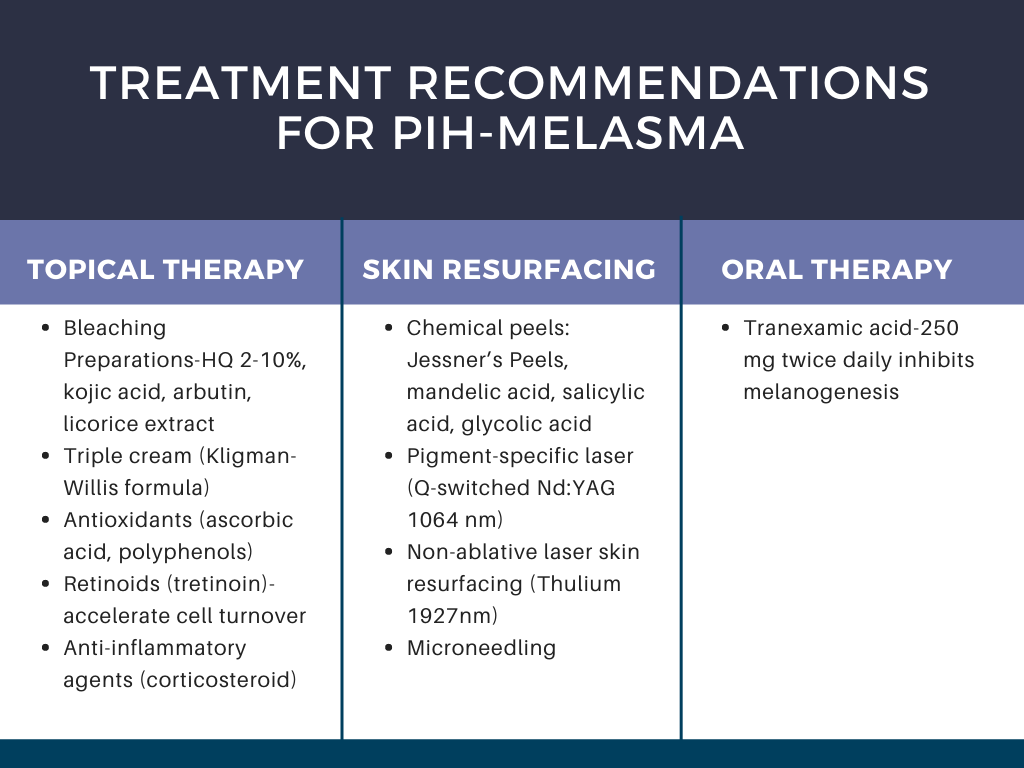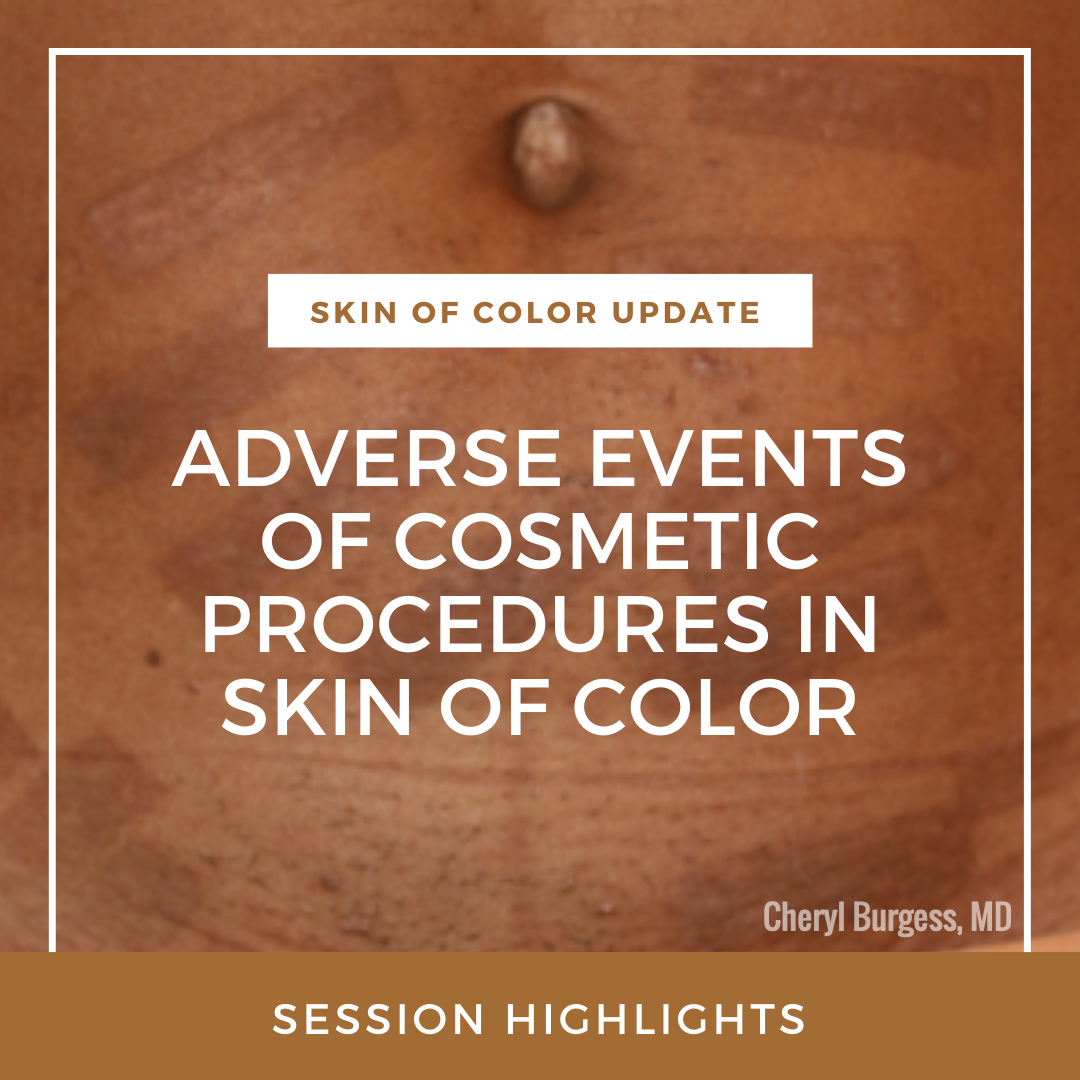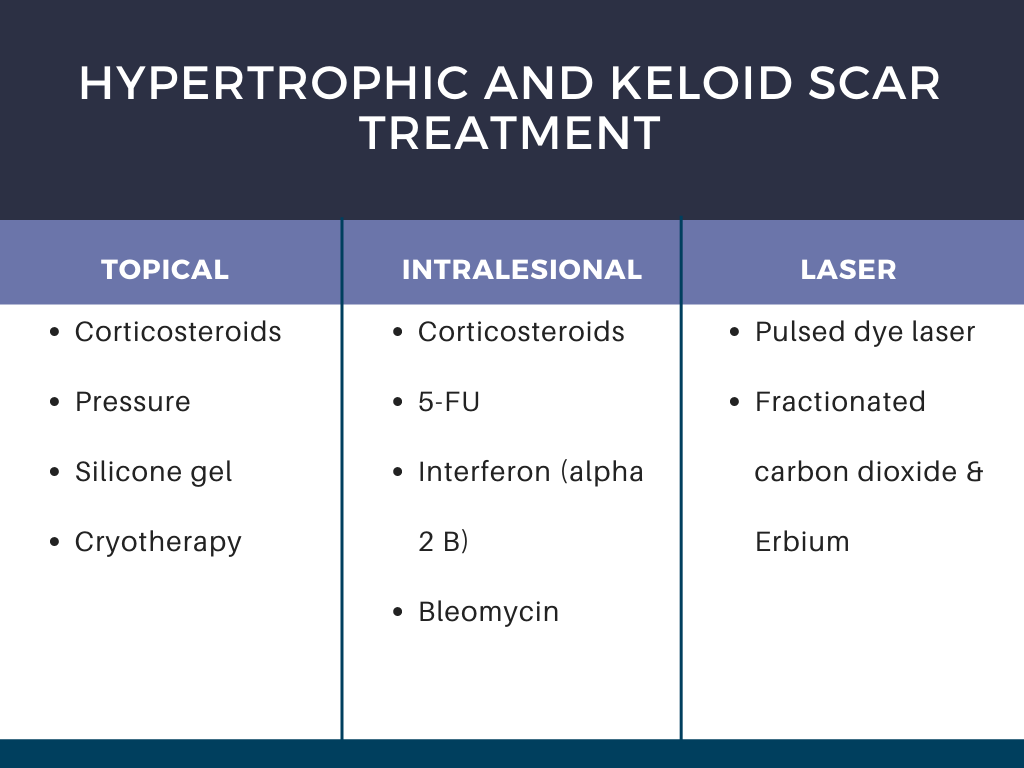Nowadays, a growing proportion of skin of color patients is undergoing cosmetic procedures. While we have reached the time where most of these procedures are effective in skin of color, they are not a one size fit all. Due to inherent differences in skin type, cosmetic procedures warrant a more conservative approach not only for clinically desirable but also for safe outcomes. At the Skin of Color Virtual Update 2020, Dr. Cheryl Burgess discussed adverse events of cosmetic procedures in skin of color with an emphasis on optimal approaches to minimize those risks.
The Takeaway:
It is important to counsel patients on appropriate cosmetic procedures. It may be necessary to tweak parameters, test spots as well as carry procedures over multiple sessions to safely obtain the desired clinical outcome.
All things being equal, the most notorious adverse events from cosmetic procedures in skin of color are treatment-associated pigmentary alterations and scarring. Many times, the risks are from the techniques used but not from the actual products/procedure. For instance, following hyaluronic fillers injections, post-inflammatory hyperpigmentation (PIH) can be a result of serial or multiple injection techniques.
PRO TIP
For fillers, to decrease the potential for bruising, hence PIH:
-
-
- Slower injection times
- Use cannula method
-
Dr. Burgess stressed that adverse events are best avoided with a more conservative approach. However, now that the damage is done, how do you successfully manage the complications? Beware that some patients may be reluctant to try corrective measures given prior adverse events and poor outcomes. This is when patient counseling is key. It is important to educate patients on the fact that not all cosmetic procedures are suitable for skin of color.
Dr. Burgess’s advice is to use a combination approach to treat these complications. Specifically, for PIH, a firm understanding of the pathway as well as how therapeutic options target the pathway is necessary (see table below). The hyperpigmentation process is complex, made of 14 steps, of which ten steps can be affected by topically applied agents. The other four steps happen too quickly to be impacted by topical therapy.

PRO TIP
-
- Risk of skin atrophy with 24-week use of triple cream for the treatment of melasma is very low.
- For epidermal and dermal Dyschromia consider Q-Switched Nd:YAG 1064 nm laser and triple cream with 6% hydroquinone combination.
Although scars are an unavoidable part of healing, inherent differences in skin type result in a greater risk of hypertrophic/keloidal scarring in skin of color. Compared to white skin, pigmented skin has increased elasticity and increased collagen. Again, combination treatment is ideal. For instance, for hypertrophic scar, Dr. Burgess uses a combination of topical corticosteroid tape to soften the lesion and follows up with intralesional triamcinolone/5-FU 10:1 mixture, with great result.
With the predicted racial shift in the US by 2044, it is important for dermatologists to be mindful of the genetic predisposition for hyperpigmentation and scarring in skin of color. Per Dr. Burgess, “it is most important to understand skin of color” and choose the right modality to address the patient’s aesthetic concerns. No two patients are the same. Thus, when it comes to skin rejuvenation in skin of color, a personalized and conservative approach is ideal to optimize outcomes and minimize adverse events.
Photo Credit: featured image courtesy of Dr. Cheryl Burgess.
This information was presented by Dr. Cheryl Burgess during the 2020 Skin of Color Update Virtual conference held on September 12-13, 2020. The above highlights were written and compiled by Dr. Cula Dautriche.
Did you enjoy this post? Find more on Aesthetic Dermatology topics here and Skin of Color topics here.


